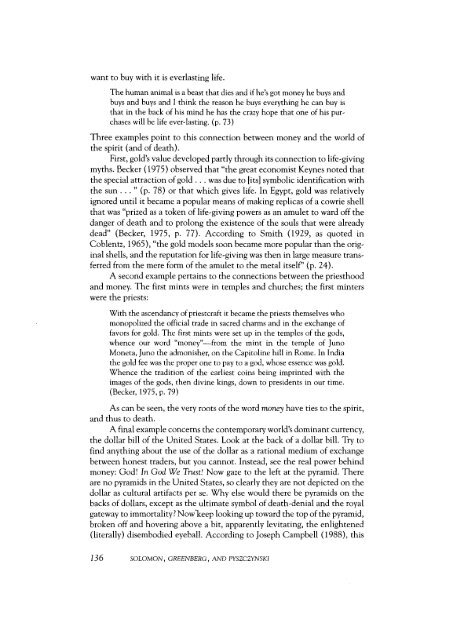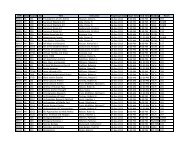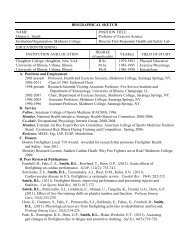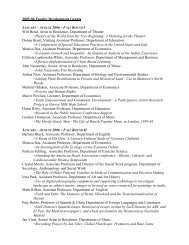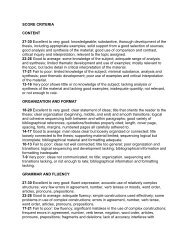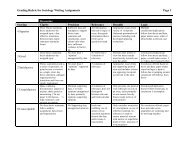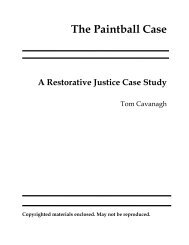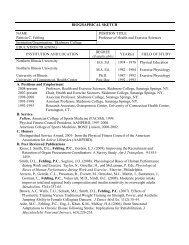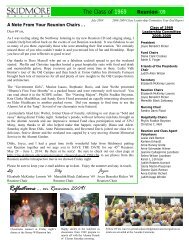Lethal consumption: Death-denying materialism
Lethal consumption: Death-denying materialism
Lethal consumption: Death-denying materialism
You also want an ePaper? Increase the reach of your titles
YUMPU automatically turns print PDFs into web optimized ePapers that Google loves.
want to buy with it is everlasting life.<br />
The human animal is a beast that dies and if he's got money he buys and<br />
buys and buys and I think the reason he buys everything he can buy is<br />
that in the back of his mind he has the crazy hope that one of his purchases<br />
will be life ever-lasting, (p. 73)<br />
Three examples point to this connection between money and the world of<br />
the spirit (and of death).<br />
First, gold's value developed partly through its connection to life-giving<br />
myths. Becker (1975) observed that "the great economist Keynes noted that<br />
the special attraction of gold . . . was due to [its] symbolic identification with<br />
the sun . . . " (p. 78) or that which gives life. In Egypt, gold was relatively<br />
ignored until it became a popular means of making replicas of a cowrie shell<br />
that was "prized as a token of life-giving powers as an amulet to ward off the<br />
danger of death and to prolong the existence of the souls that were already<br />
dead" (Becker, 1975, p. 77). According to Smith (1929, as quoted in<br />
Coblentz, 1965), "the gold models soon became more popular than the original<br />
shells, and the reputation for life-giving was then in large measure transferred<br />
from the mere form of the amulet to the metal itself (p. 24).<br />
A second example pertains to the connections between the priesthood<br />
and money. The first mints were in temples and churches; the first minters<br />
were the priests:<br />
With the ascendancy of priestcraft it became the priests themselves who<br />
monopolized the official trade in sacred charms and in the exchange of<br />
favors for gold. The first mints were set up in the temples of the gods,<br />
whence our word "money"—from the mint in the temple of Juno<br />
Moneta, Juno the admonisher, on the Capitoline hill in Rome. In India<br />
the gold fee was the proper one to pay to a god, whose essence was gold.<br />
Whence the tradition of the earliest coins being imprinted with the<br />
images of the gods, then divine kings, down to presidents in our time.<br />
(Becker, 1975, p. 79)<br />
As can be seen, the very roots of the word money have ties to the spirit,<br />
and thus to death.<br />
A final example concerns the contemporary world's dominant currency,<br />
the dollar bill of the United States. Look at the back of a dollar bill. Try to<br />
find anything about the use of the dollar as a rational medium of exchange<br />
between honest traders, but you cannot. Instead, see the real power behind<br />
money: God! In God We Trust! Now gaze to the left at the pyramid. There<br />
are no pyramids in the United States, so clearly they are not depicted on the<br />
dollar as cultural artifacts per se. Why else would there be pyramids on the<br />
backs of dollars, except as the ultimate symbol of death-denial and the royal<br />
gateway to immortality ? Now keep looking up toward the top of the pyramid,<br />
broken off and hovering above a bit, apparently levitating, the enlightened<br />
(literally) disembodied eyeball. According to Joseph Campbell (1988), this<br />
136 SOLOMON, GREENBERG, AND PYSZCZYNSfCI


